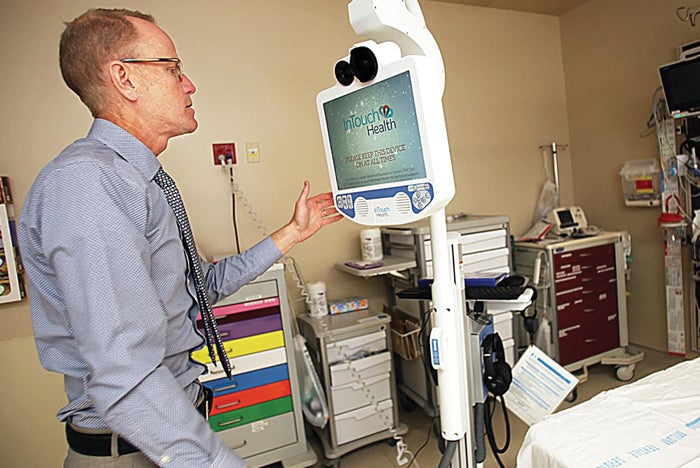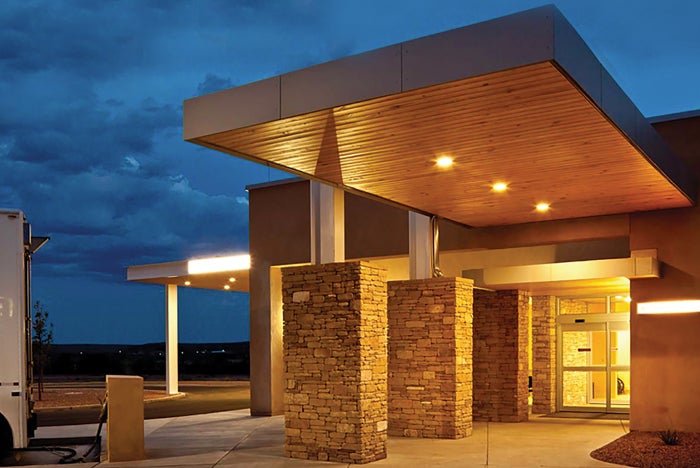Telemedicine is an important feature of freestanding ED

Daniel Roe, M.D., director of telemedicine at Copper Queen Community Hospital, adjusts the ED telemedicine monitor.
Image by Mark Levy/The Herald/Review
When a 100-year-old hospital closed in Douglas, Ariz., it left 40,000 people without a nearby emergency department (ED) or diagnostic services. To fill this void, Copper Queen Community Hospital, 26 miles away in Bisbee, Ariz., opened a quick-care service shortly after the closure and then proceeded to build a 24-hour ED, which opened in April 2017.
“This is a critical area, because it is on the Mexican border,” says James Dickson, the 14-bed hospital’s CEO. “There is a lack of quality health care in Mexico, so some patients drive across the border to seek health care services. This rural area needed a higher acuity of care, yet the population could not even financially support a traditional level of care. The solution to increase acuity and availability was to build a freestanding emergency department.”
The new $6 million, nine-bed facility was designed by Devenney Group Ltd. Architects of Phoenix. The facility provides CT scans, ultrasound and other diagnostic laboratory capabilities around the clock. It also has stroke consults available via telemedicine through a partnership with Mayo Clinic.
The new facility integrates support systems such as cardiac monitoring and telemedicine to bring services that were not available prior to its opening. It also offers advanced telemedicine services.
“The community now has emergency services available once again,” Dickson concludes. Additionally, the services that were added are of higher quality and bring in numerous outside resources via telemedicine.
Copper Queen’s telemedicine program includes cardiology, concussion, endocrinology, behavioral health, pediatrics, stroke and trauma. With telemedicine, patients are able to go to Copper Queen Community Hospital, the ED or clinic and via video technology, be diagnosed without the hassle and added cost of transportation. “This helps patients receive faster treatment in a familiar environment, and without the worry of excessive medical costs,” Dickson says.
Karen Appold is a freelance writer based in Macungie, Pa.





